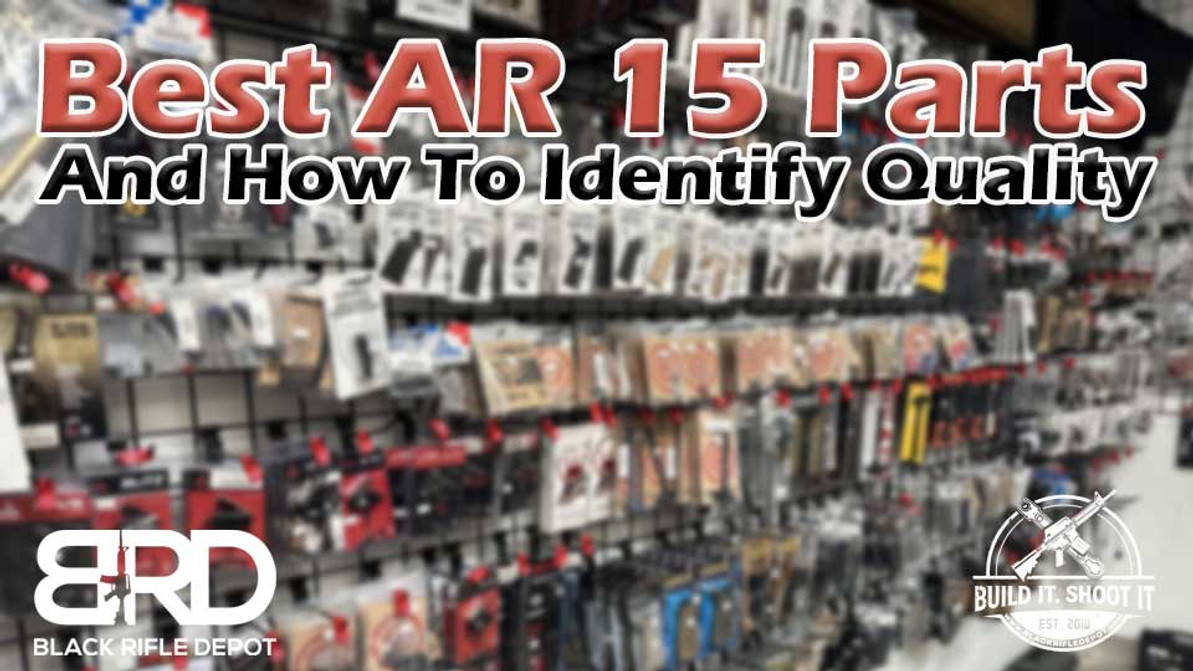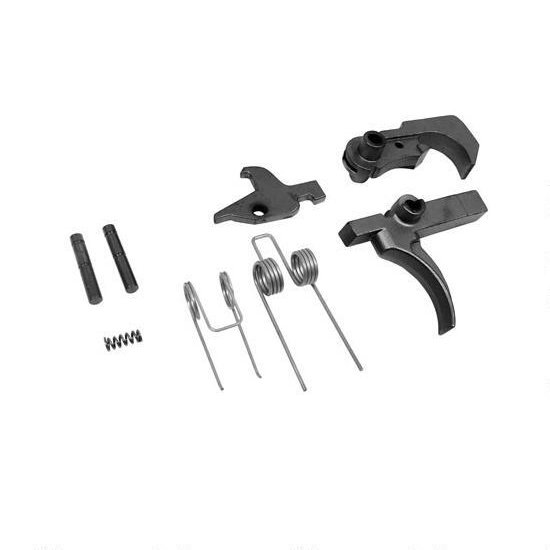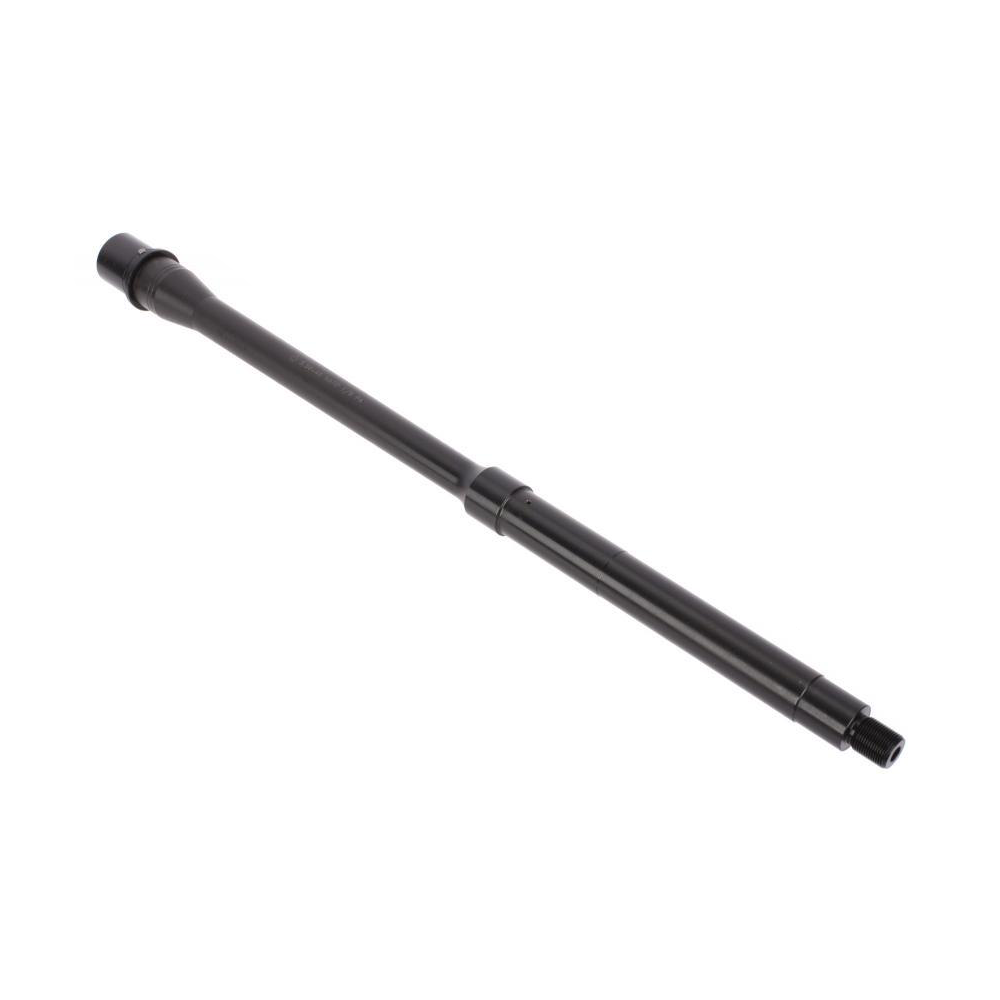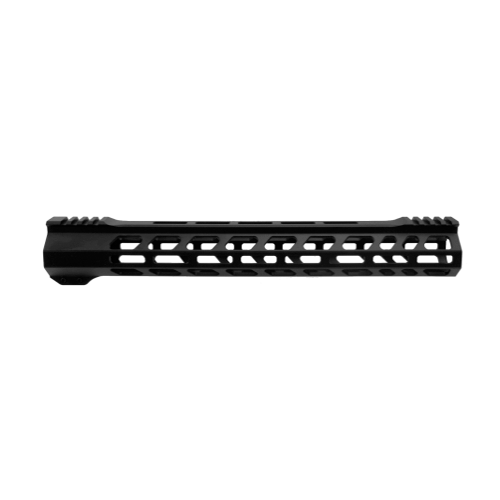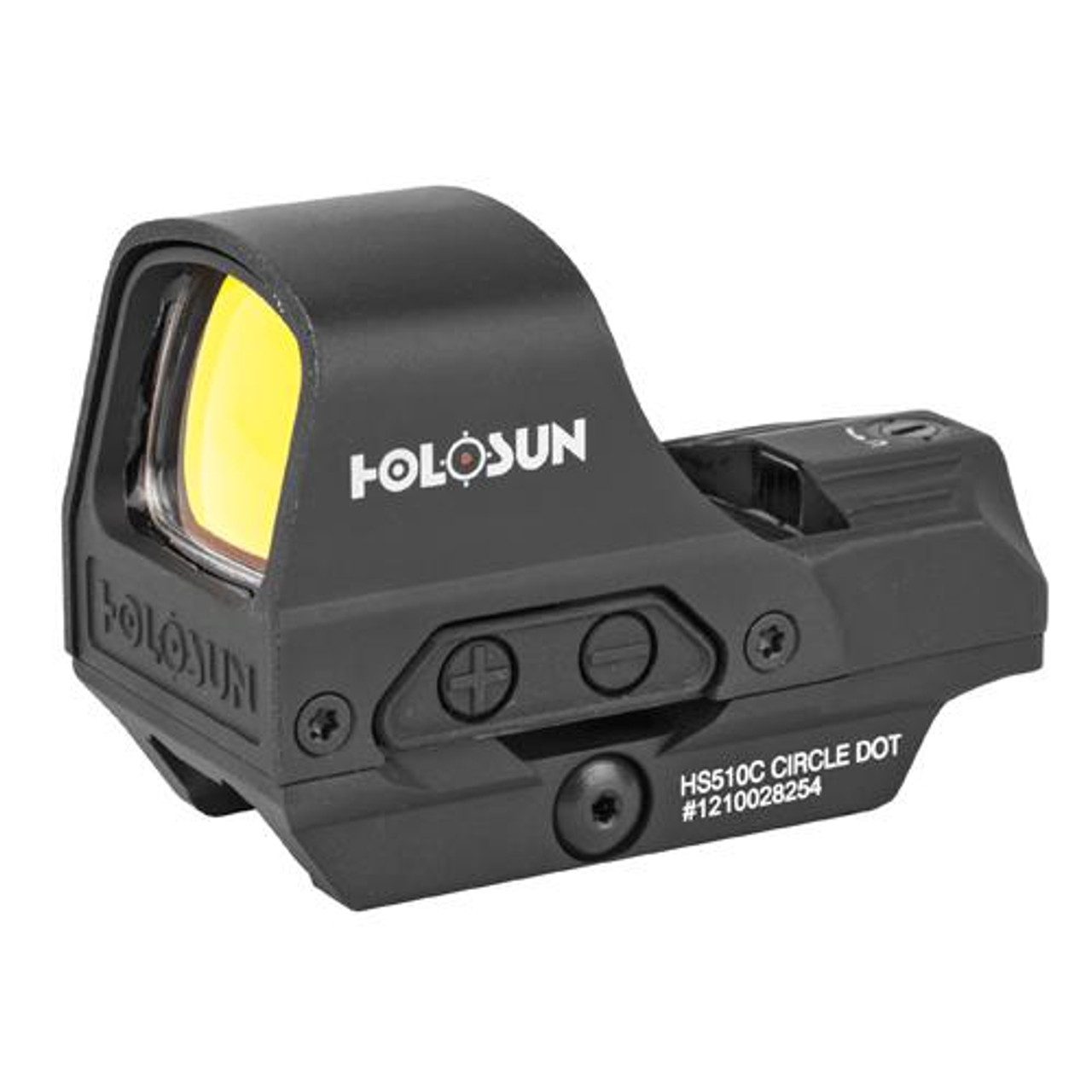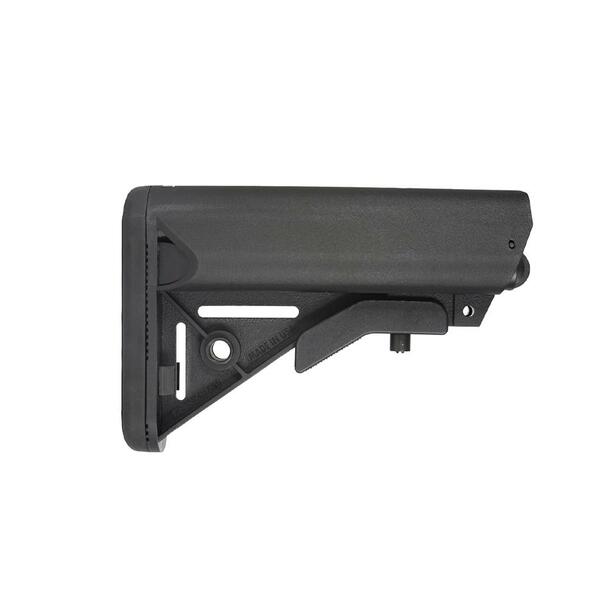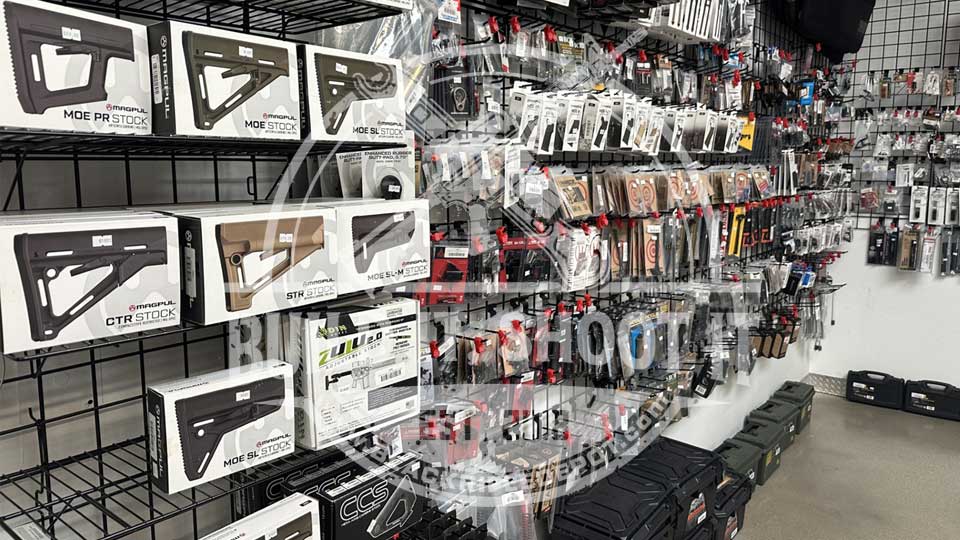Best AR 15 Parts And How To Identify Quality
Introduction to AR-15 Parts
The AR-15 platform is a highly adaptable and customizable rifle. Shooters widely favor it for its modular design and versatile applications, from recreational shooting to home defense and competitive shooting. Originating from the military M16 and M4 designs, the AR-15 has evolved into a civilian favorite due to its ease of customization and wide availability of parts and accessories. Its standardized design allows for endless possibilities in terms of configuration, enabling users to tailor the rifle to their specific needs and preferences.
Understanding the essential parts of the AR-15 is crucial for anyone looking to build or upgrade their rifle. Key components include the AR barrels, bolt carrier groups (BCG), handguards, lower receivers, upper receivers, and trigger groups. Each part plays a vital role in the overall performance and reliability of the firearm. For instance, the barrel affects accuracy and durability, while the BCG is essential for the rifle's cycling and operation.
The importance of quality parts must be balanced. High-quality components ensure the rifle operates smoothly, reliably, and safely. Inferior parts can lead to malfunctions, decreased accuracy, and potential safety hazards. Investing in reputable brands and thoroughly researching each component's specifications and reviews can significantly enhance the overall performance and longevity of the AR-15. Quality parts improve the shooting experience and provide peace of mind, knowing that the rifle will function correctly when it matters most. This foundation of knowledge sets the stage for exploring the best AR-15 parts and how to identify top-tier components.
Essential AR-15 Parts
When building or upgrading an AR-15, understanding the essential parts and their functions is vital to creating a high-performing rifle. Here’s a brief overview of the critical components:
Barrel The AR-15 barrel is crucial for accuracy and longevity. It guides the bullet's path and impacts its velocity and precision. Barrels come in various lengths, materials, and finishes, affecting the rifle's performance. Chrome-lined barrels offer durability, stainless steel barrels provide excellent accuracy, and nitride finishes enhance corrosion resistance.
Bolt Carrier Group (BCG) The BCG is the heart of the AR-15 and is responsible for the rifle’s cycling action. It includes the bolt, carrier, gas key, and firing pin. A high-quality BCG ensures reliable operation and smooth cycling. Look for BCGs made from durable materials like 8620 steel for the carrier and Carpenter 158 steel for the bolt, with coatings such as phosphate, nickel-boron, or nitride for enhanced wear resistance.
Handguard: The handguard protects the shooter’s hand from the barrel’s heat and provides mounting points for accessories like optics, lights, and grips. There are two main types: free-float and drop-in. Free-float handguards offer better accuracy by not touching the barrel, while drop-in handguards are easier to install and more budget-friendly.
Lower Receiver The lower receiver houses the trigger group, magazine well, and buffer tube and is legally considered a firearm. Lowers can be forged or billet, with forged being more robust and lighter, while billet allows for more customization and unique designs. Material choice (usually 7075-T6 aluminum) and precise machining are vital for durability and fit.
Upper Receiver: The upper receiver holds the barrel, BCG, and handguard. It also contains the ejection port and charging handle. Like the lower receiver, uppers can be forged or billet. A high-quality upper ensures proper alignment and fit with the barrel and BCG, contributing to the rifle's accuracy and reliability.
Trigger Group The trigger group, or fire control group, includes the trigger, hammer, and related springs. It significantly affects the shooting experience and accuracy. Options range from standard mil-spec triggers to high-end aftermarket triggers offering lighter, crisper pulls and shorter reset times. Single-stage triggers provide a consistent pull, while two-stage triggers offer a distinct take-up before the break.
Understanding these essential parts and their roles is the first step toward building a reliable and high-performing AR-15. Each component must be chosen carefully, considering the desired balance between cost, quality, and specific performance needs.
What to Look for in High-Quality AR-15 Parts
When selecting AR-15 parts, quality is paramount to ensure performance, reliability, and safety. Here are vital factors to consider when evaluating high-quality AR-15 components:
Material and Construction: High-quality AR-15 parts are made from durable materials like 7075-T6 aluminum for receivers, Carpenter 158 steel for bolts, and chrome-moly vanadium steel for barrels. Precision machining and robust construction ensure parts fit well and withstand extensive use.
Finish and Coating: Look for parts with protective finishes and coatings. For instance, barrels may have chrome lining, nitride, or phosphate coatings to resist corrosion and wear. Bolt carrier groups with nickel-boron or nitride coatings provide smoother operation and easier cleaning.
Brand Reputation Reputable brands often indicate quality and reliability. Established manufacturers like Aero Precision, Daniel Defense, and BCM have built trust through consistent, high-quality products. Researching brands and their reputations can help you avoid inferior parts.
Customer Reviews and Feedback Customer reviews and feedback provide real-world insights into the performance and reliability of AR-15 parts. To gauge the quality of specific components, look for consistent positive reviews and feedback from experienced users.
Warranty and Customer Support A solid warranty, and responsive customer support indicates a manufacturer's confidence in its products. Warranties provide peace of mind, knowing that parts can be replaced or repaired if defects arise.
Considering these factors will help you identify high-quality AR-15 parts, ensuring your rifle performs optimally and remains reliable. Investing in quality components enhances your shooting experience and contributes to your firearm's longevity and safety.
Top Brands for AR-15 Parts
When it comes to AR-15 parts, choosing top brands ensures you get reliable, high-quality components that enhance your rifle’s performance and longevity. Here are some of the leading brands known for their excellence in AR-15 parts:
Aero Precision Aero Precision is renowned for its precision engineering and high-quality manufacturing processes. Their upper and lower receivers are highly regarded for their fit and finish, and they offer complete upper assemblies that are reliable and accurate.
Daniel Defense Daniel Defense is synonymous with quality and durability. Their barrels and handguards are particularly praised for their craftsmanship and performance. Military and law enforcement often use Daniel Defense products, reflecting their reliability under demanding conditions.
Bravo Company Manufacturing (BCM) is a trusted name in the AR-15 community. BCM is known for producing top-notch parts that withstand rigorous use. Their bolt carrier groups, barrels, and furniture sets are popular among severe shooters and professionals for their robustness and precision.
Geissele Automatics Geissele is famous for its high-performance triggers, offering both single-stage and two-stage options that provide a crisp, clean pull. Their rails and handguards are also highly regarded for their lightweight yet sturdy construction.
Magpul Magpul is a go-to brand for AR-15 furniture and accessories. Their stocks, grips, and magazines are known for their ergonomic designs and durability, making them a favorite among shooters who prioritize comfort and functionality.
Vortex Optics While not a parts manufacturer per se, Vortex Optics deserves mention for its exceptional scopes and red dot sights, often paired with AR-15 builds to enhance accuracy and target acquisition.
These brands have earned their reputation through consistent quality, innovation, and customer satisfaction. Choosing components from these manufacturers ensures you invest in parts that will perform reliably and last through extensive use.
Best AR-15 Barrels
The right barrel is crucial for optimizing your AR-15’s performance, accuracy, and durability. Here’s a look at the types of barrels and critical factors to consider:
Types of Barrels
Chrome-Lined Barrels: These barrels have a chrome coating inside the bore, offering excellent corrosion resistance and extended lifespan. They are ideal for high-volume shooting and harsh environments but may slightly reduce accuracy compared to other types.
Stainless Steel Barrels: Known for their superior accuracy, stainless steel barrels are famous among precision shooters. They resist corrosion and offer consistent performance, though they may wear out faster than chrome-lined options under heavy use.
Nitride Barrels: These barrels undergo a nitriding process that hardens the surface, enhancing wear and corrosion resistance. They balance the durability of chrome-lined barrels and the accuracy of stainless steel barrels.
Factors to Consider
Length: Barrel length affects velocity, accuracy, and maneuverability. Typical lengths include 16 inches for general-purpose use, 18 inches for a balance of accuracy and handling, and 20 inches or longer for maximum velocity and precision shooting.
Twist Rate: The twist rate, measured in inches per turn (e.g., 1:7, 1:8), determines how well the barrel stabilizes different bullet weights. A 1:7 twist suits heavier bullets (62-77 grains), while a 1:9 twist works well with lighter bullets (55-62 grains).
Profile: Barrel profile influences weight and heat dissipation. Lightweight profiles enhance maneuverability, while heavier profiles improve heat tolerance and accuracy during sustained fire. Standard profiles include government, pencil, and bull.
Selecting the best AR-15 barrel involves balancing these factors based on your specific needs, ensuring you achieve the desired performance and reliability for your intended shooting applications.
Choosing the Right Bolt Carrier Group
Selecting the right Bolt Carrier Group (BCG) is essential for the reliable operation of your AR-15. The BCG is the rifle's heart, managing the rounds' cycling. Here’s what you need to know:
Full-Auto vs. Semi-Auto BCGs
Full-Auto BCGs: Often preferred for their added mass, full-auto BCGs provide more excellent reliability by increasing dwell time, which aids in smoother cycling and reduced wear on internal components. These BCGs are legal to use in semi-automatic AR-15s and do not make the rifle fully automatic. The additional weight can also help manage recoil, improving control during rapid fire.
Semi-Auto BCGs: Lighter than their full-auto counterparts, semi-auto BCGs can reduce the rifle's overall weight, which might benefit specific applications like competition shooting or hunting, where a lighter rifle is advantageous. However, due to the decreased mass, they may be less reliable under harsh conditions or with rapid fire.
Coatings and Finishes
Phosphate: The most common and affordable finish, phosphate provides decent corrosion resistance and durability. Its rough texture can hold lubricant well but might be more challenging to clean than other finishes.
Nickel Boron (NiB): This finish offers a slick, smooth surface that enhances lubricity and ease of cleaning. Nickel boron BCGs are highly durable and provide excellent corrosion resistance, making them ideal for high-round-count rifles and adverse conditions.
Nitride: Nitride-treated BCGs are known for their hardness and excellent wear resistance. This finish penetrates the steel, offering superior corrosion resistance and a smooth surface that is easy to clean. It combines many of the benefits of phosphate and nickel boron finishes.
Chrome: While less common today, chrome-plated BCGs offer excellent corrosion resistance and a smooth, slick surface. They are easy to clean and maintain but can be more expensive.
Choosing the right BCG involves considering your specific needs and preferences. A full-auto BCG with a nickel boron or nitride finish is an excellent choice for general use and enhanced reliability. For lightweight builds, a semi-auto BCG might be more suitable. Prioritizing quality and reputable manufacturers will ensure your AR-15 operates reliably and smoothly.
Handguards: Key Considerations
Choosing a suitable handguard is crucial for the performance, comfort, and functionality of your AR-15. Here’s a look at key considerations:
Free-Float vs. Drop-In Handguards
Free-Float Handguards: These handguards do not touch the barrel except at the barrel nut, allowing the barrel to "float" freely. This design enhances accuracy by eliminating pressure points on the barrel, which can affect harmonics and bullet trajectory. Free-float handguards often feature more robust mounting systems for accessories and optics, making them ideal for precision shooting and tactical applications. They are typically more expensive and require more complex installation than drop-in handguards.
Drop-In Handguards: These are easier to install and usually more affordable. They are held in place by the delta ring and front handguard cap, making them ideal for quick upgrades without specialized tools. While they provide sufficient accuracy for most recreational and general-purpose shooting, they can exert pressure on the barrel, which may slightly affect accuracy. Drop-in handguards are excellent for beginners and those seeking a simple, cost-effective solution.
Material and Design Options
Material: Handguards are commonly made from aluminum or polymer. Aluminum handguards are durable and provide excellent heat dissipation, making them suitable for high-intensity shooting. They are often lighter than polymer handguards, which can reduce overall rifle weight. Polymer handguards are typically more affordable, resistant to heat, and provide a comfortable grip, making them suitable for casual shooting and budget builds.
Design Options: Handguards come in various designs, including Picatinny, M-LOK, and KeyMod. Picatinny: This older design offers robust mounting options but can be heavier and bulkier. M-LOK and KeyMod: These modern designs allow for the direct attachment of accessories without additional rail sections, reducing weight and profile while maintaining modularity.
Length: Handguards are available in different lengths, including carbine, mid-length, and rifle-length. The appropriate length depends on your barrel length and intended use. Longer handguards offer more space for accessories and improved control, while shorter handguards are more compact and lightweight.
Choosing the suitable handguard involves balancing ease of installation, cost, material, design, and intended use. Free-float handguards are preferred for accuracy and modularity, while drop-in handguards offer simplicity and affordability. Selecting a quality handguard that suits your needs will enhance your AR-15’s performance and user experience.
Evaluating Lower and Upper Receivers
When building or upgrading an AR-15, the quality of the lower and upper receivers is critical to the rifle's overall performance and reliability. Here's a guide to evaluating these essential components:
Forged vs. Billet Receivers
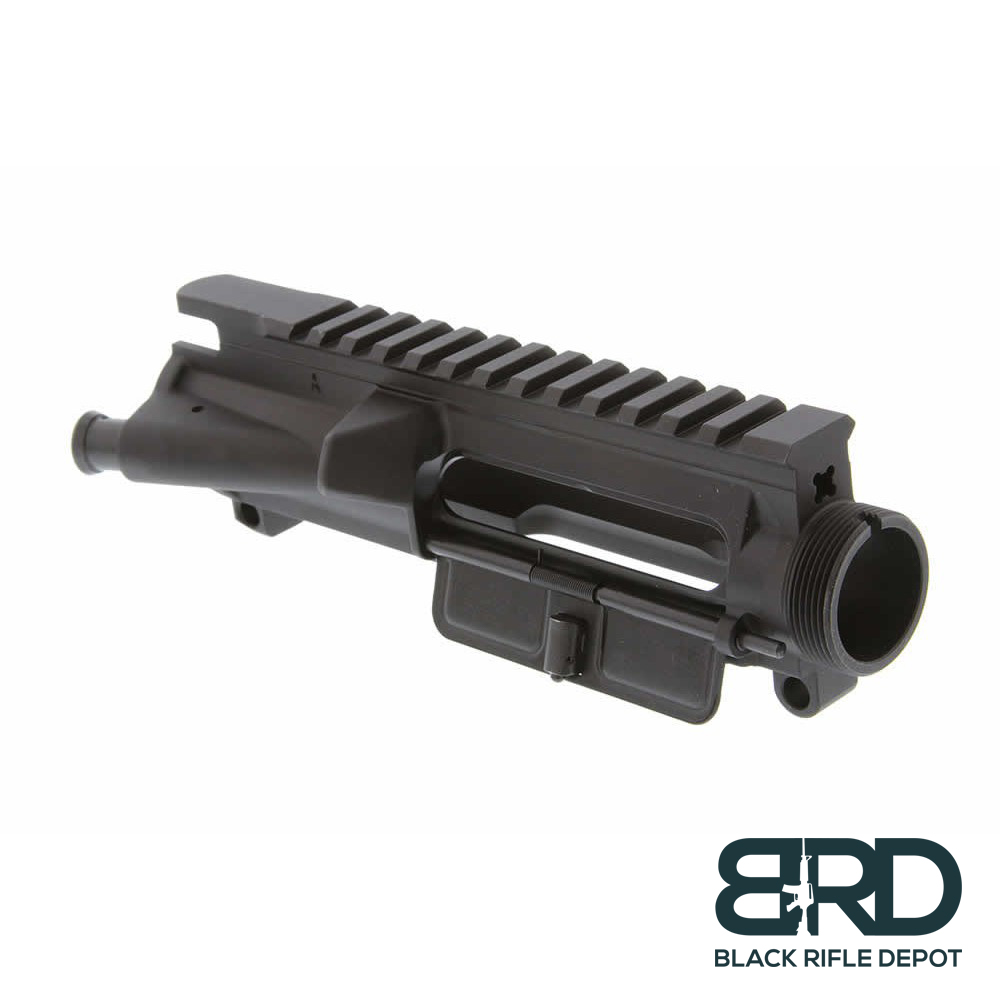 Forged Receivers: Forged receivers are made by hammering aluminum into shape, resulting in a denser and more substantial material. They are typically lighter and more robust than billet receivers, offering excellent durability for demanding use. Due to their proven reliability and strength, forged receivers are standard in military and law enforcement applications. They are also generally more cost-effective, making them popular for most AR-15 builds.
Forged Receivers: Forged receivers are made by hammering aluminum into shape, resulting in a denser and more substantial material. They are typically lighter and more robust than billet receivers, offering excellent durability for demanding use. Due to their proven reliability and strength, forged receivers are standard in military and law enforcement applications. They are also generally more cost-effective, making them popular for most AR-15 builds.
Billet Receivers: Billet receivers are machined from a solid aluminum block, allowing for more intricate designs and customization options. They often feature enhanced aesthetics and unique styling that set them apart from the standard look of forged receivers. While billet receivers can offer increased rigidity and precision due to their machining process, they are usually heavier and more expensive than forged receivers. They are ideal for custom builds where aesthetics and unique features are prioritized.
Key Features to Look For
Material: Both forged and billet receivers are typically made from 7075-T6 aluminum, known for its superior strength and lightweight properties. Please ensure the receiver you choose uses this high-grade material for maximum durability.
Fit and Finish: The receiver's finish should be smooth and even, with no rough edges or machining marks. Anodized finishes provide excellent corrosion resistance and a sleek appearance.
Tolerances: High-quality receivers will have tight tolerances, ensuring a precise fit between the upper and lower receivers. This contributes to overall accuracy and reliability.
Reinforcements: Look for features like reinforced buffer tube areas, flared mag wells for easier magazine changes, and integrated trigger guards for added strength and convenience.
Brand Reputation: Opt for receivers from reputable manufacturers known for their quality control and consistency. Brands like Aero Precision, BCM, and Daniel Defense are trusted for their high-quality receivers.
Evaluating these factors will help you select top-tier lower and upper receivers, ensuring your AR-15 is reliable, accurate, and durable. Whether you choose forged for strength and cost-effectiveness or billet for customization and aesthetics, prioritizing quality will enhance your rifle's performance.
Selecting the Best Trigger Group
Choosing the right trigger group is crucial for optimizing your AR-15's shooting experience and accuracy. Here’s a guide to help you select the best trigger group:
Single-Stage vs. Two-Stage Triggers
Single-Stage Triggers: These triggers have a consistent pull weight from start to break, providing a straightforward, crisp pull. They are ideal for rapid, successive shots and are often favored in tactical and self-defense situations. Single-stage triggers are generally more concise, more robust, and less expensive, making them a popular choice for many shooters.
Two-Stage Triggers: Two-stage triggers have a distinct take-up (first stage) followed by a lighter, crisp break (second stage). This design allows for greater control and precision, making them ideal for precision shooting and long-range applications. The initial take-up lets the shooter prepare for the shot, enhancing accuracy and consistency. Two-stage triggers are often preferred in competitive shooting and precision rifles.
Aftermarket Options and Upgrades
Aftermarket Triggers: Upgrading to an aftermarket trigger can significantly improve your AR-15's performance. Brands like Geissele, Timney, and CMC offer high-quality triggers with various pull weights and designs to suit different shooting styles. Aftermarket triggers are designed to provide a smoother, lighter pull with a cleaner break, enhancing accuracy and shooting comfort.
Adjustable Triggers: Some aftermarket triggers offer adjustability, allowing you to fine-tune the pull weight and travel to your preference. This customization ensures the trigger feels perfect for your specific shooting needs, whether for competition, hunting, or tactical use.
Drop-In Triggers: These are self-contained units that make installation easy and quick. They often come pre-adjusted from the factory and require minimal installation effort, making them a convenient upgrade for any AR-15.
Trigger Components: Upgrading individual components like springs, hammers, and sears can also enhance trigger performance. Lighter springs reduce pull weight, while polished components provide a smoother action.
Selecting the best trigger group involves understanding your shooting needs and preferences. Whether you opt for a single-stage trigger for rapid shots or a two-stage trigger for precision, investing in a high-quality aftermarket trigger will significantly enhance your AR-15’s performance and shooting experience.
Upgrading AR-15 Sights and Optics
Upgrading your AR-15 sights and AR-15 optics is crucial in enhancing accuracy and target acquisition. Here's what you need to know:
Iron Sights vs. Optics
Iron Sights: Traditional iron sights include a front post and a rear aperture or notch. They are robust, reliable, and don't require batteries, making them a dependable backup even if your primary optic fails. Iron sights are ideal for short to medium ranges and can be used effectively with practice. They also serve as a valuable training tool, helping shooters develop fundamental marksmanship skills.
Optics: Optics, including red dot sights, holographic sights, and magnified scopes, provide faster target acquisition and improved accuracy, especially at varying distances. Red Dot Sights are essential for long-range shooting, providing the magnification to see and hit distant targets accurately.
Recommended Brands and Models
Iron Sights:
- Magpul MBUS: Durable, affordable, and easy to install, these polymer sights are a popular choice for many AR-15 owners.
- Troy Industries: Known for their high-quality metal sights, Troy Sights offers robust construction and precise adjustments.
Red Dot Sights:
- Aimpoint PRO: Renowned for its durability and battery life, it is a favorite among military and civilian shooters.
- Trijicon MRO: Compact and rugged, it provides a clear, crisp reticle and is known for its reliability under harsh conditions.
Holographic Sights:
- EOTech EXPS3: It offers a large viewing window and excellent reticle options, making it ideal for close-quarters and medium-range engagements.
- Vortex AMG UH-1 Gen II: Known as the “Huey,” this sight provides a crisp holographic reticle with durable construction.
Magnified Scopes:
- Vortex Viper PST Gen II: Offers excellent clarity, precise tracking, and rugged construction, making it a great choice for long-range shooting.
- Leupold Mark 5HD: Many precision shooters favor this scope because of its exceptional glass quality and rugged design.
When upgrading your AR-15 sights and optics, consider your primary use case—whether for home defense, competition, or long-range shooting—and choose quality brands known for their reliability and performance. Investing in the correct sights and optics will significantly enhance your shooting accuracy and overall experience.
AR-15 Stocks and Grips
Choosing the right AR stock and grip for your rifle can significantly impact your shooting comfort and overall performance. Here’s what to consider:
Fixed vs. Adjustable Stocks
Fixed Stocks: Fixed stocks provide a solid, unchanging length of pull, which can enhance stability and accuracy. They are typically more robust and can be less expensive than adjustable stocks. Fixed stocks are ideal for precision shooting, where consistency in shoulder placement is critical. They also offer a traditional look and are often more straightforward to install.
Adjustable Stocks: Adjustable stocks allow the shooter to change the length of pull and sometimes the cheek height, making them versatile and adaptable to different shooting scenarios and body sizes. They are ideal for tactical applications, where quick adjustments are necessary for various shooting positions or when wearing body armor. Adjustable stocks like the Magpul CTR or the B5 Systems SOPMOD offer both comfort and versatility, allowing for rapid customization in the field.
Ergonomics and Customization Options
Ergonomics: The ergonomics of your stock and grip play a crucial role in your shooting comfort and control. A well-designed stock should provide a comfortable cheek weld and proper length of pull, while a good grip should fit your hand naturally, allowing for a firm hold and easy access to the trigger. Grips with a more vertical angle, such as the Magpul MOE K2 or the BCM Gunfighter Grip, can offer better ergonomics, especially for shooters using modern, squared-off shooting stances.
Customization Options: Modern AR-15 stocks and grips have numerous customization options to tailor your rifle to your preferences. Stocks with adjustable cheek risers, sling attachment points, and storage compartments add versatility and convenience. Grips with interchangeable backstraps or storage compartments for spare parts and batteries offer practical enhancements. Brands like Magpul, BCM, and Hogue provide various stocks and grips with multiple features and designs to suit different needs.
Material and Construction: Look for stocks and grips made from durable materials such as reinforced polymer or high-quality aluminum. These materials offer a good balance of strength, weight, and resistance to environmental conditions.
Aesthetics: While functionality is paramount, your AR-15's visual appeal can also be a consideration. Many stocks and grips come in various colors and finishes, allowing you to match your rifle's look to your style.
Selecting the right stock and grip involves balancing ergonomic comfort, adjustability, and customization options to meet your needs. Whether you prioritize stability and precision with a fixed stock or versatility and adaptability with an adjustable stock, investing in high-quality components will enhance your shooting experience and performance.
Other Essential AR-15 Accessories
Upgrading your AR-15 with essential accessories can significantly enhance its performance, versatility, and ease of use. Here are vital accessories to consider:
Magazines
Magazines are critical for reliably feeding ammunition. High-quality magazines ensure smooth operation and reduce the likelihood of malfunctions. Magpul PMAGs are among the most popular choices due to their durability, reliability, and wide range of capacities. They feature a robust polymer construction and anti-tilt followers that improve feeding reliability. Lancer L5AWM magazines combine steel-fed lips with a polymer body for enhanced durability and performance. Investing in reliable magazines ensures your AR-15 functions flawlessly in any situation.
Muzzle Devices
Muzzle devices, such as flash hiders, compensators, and muzzle brakes, play a significant role in managing recoil, muzzle rise, and flash signature. Flash Hiders, like the A2 Birdcage, reduce the visible flash when firing, which is helpful in low-light conditions. Compensators like the VG6 Precision Gamma help mitigate muzzle rise, allowing faster follow-up shots by directing gases upward and to the sides. Muzzle Brakes, like the SureFire ProComp, are designed to reduce felt recoil by redirecting gases, making shooting more comfortable and improving accuracy during rapid fire.
Slings and Mounts
A good sling provides stability, security, and ease of carrying your AR-15. Two-point slings are versatile and can be adjusted for various carry positions, offering excellent stability and control. Blue Force Gear Vickers Sling is highly recommended for its durability, ease of adjustment, and comfort. Single-point slings are ideal for quick transitions and maneuverability in close quarters. The Magpul MS3 sling can be converted between single and two-point configurations, offering flexibility.
Mounts are essential for attaching accessories like optics, lights, and lasers. Quick-detach (QD) mounts allow for rapid attachment and removal of accessories, ensuring flexibility in various scenarios. M-LOK and KeyMod systems provide secure mounting solutions while keeping the rifle's weight and profile low. Brands like Midwest Industries and Aero Precision offer robust and reliable mounting options for various accessories.
Backup Iron Sights (BUIS)
Even if you primarily use optics, having a set of backup iron sights is crucial for reliability. Magpul MBUS sights are famous for their durability and ease of use. They can be quickly deployed if your primary optic fails, ensuring you can still effectively aim and shoot.
Investing in these essential AR-15 accessories enhances your rifle’s functionality, performance, and versatility, ensuring you are well-prepared for any shooting scenario.
Maintenance and Care for AR-15 Parts
Proper maintenance and care for your AR-15 parts are crucial for ensuring reliable performance, longevity, and safety. Here are essential cleaning, lubrication, and routine maintenance practices:
Cleaning and Lubrication Tips
Cleaning:
- Disassembly: Begin by safely disassembling your AR-15, separating the upper and lower receivers, and removing the bolt carrier group (BCG) and charging handle.
- Barrel: Use a bore brush and solvent to clean the barrel from the chamber to the muzzle. Follow up with a bore snake or patches to remove residue.
- Bolt Carrier Group (BCG): Scrub the BCG components with a nylon brush and solvent, paying particular attention to the bolt, firing pin, and gas key. Please make sure all carbon buildup is removed.
- Upper Receiver: Wipe down the upper receiver's interior with a solvent-soaked cloth, focusing on the chamber and locking the lug area.
- Lower Receiver: Clean the lower receiver with a brush and solvent around the trigger group. Be gentle to avoid damaging any components.
- Small Parts: Clean small parts, like the firing pin and cam pin, with solvent and a brush to ensure they are free of debris and carbon buildup.
Lubrication:
- BCG: Apply a thin coat of high-quality gun oil to the bolt, gas rings, cam pin, and carrier rails. Lubricate all contact points to ensure smooth operation.
- Upper Receiver: Lightly lubricate the inside of the upper receiver, including the charging handle channel and the forward assist.
- Lower Receiver: Apply a small amount of oil to the trigger, hammer pins, and other pivot points to ensure smooth function.
- Barrel: Apply a light coat of oil to the barrel's exterior to prevent rust and corrosion.
Routine Maintenance Practices
After Every Range Session:
- Basic Cleaning: Perform a basic cleaning after every range session, focusing on the barrel, BCG, and chamber. This helps prevent carbon buildup and corrosion.
- Inspection: Check for any signs of wear or damage on critical components like the BCG, barrel, and lower receiver. Please replace any worn or damaged parts as soon as possible.
Monthly Maintenance:
- Detailed Cleaning: Conduct a more thorough cleaning, including the gas and buffer tubes, to ensure all parts are debris-free and functioning correctly.
- Lubrication: Reapply lubrication to all moving parts, focusing on high-friction areas to ensure smooth operation.
Seasonal or Annual Maintenance:
- Deep Clean: Disassemble the rifle entirely and thoroughly clean all components, ensuring every part is free from carbon buildup and corrosion.
- Function Check: After reassembly, perform a function check to ensure all parts are working correctly and the rifle is safe to use.
- Storage: Store the rifle in a cool, dry place with a light coat of oil on the exterior surfaces to protect against rust and corrosion.
Regular maintenance and proper care will keep your AR-15 in optimal condition, ensuring it performs reliably and safely whenever needed. Prioritizing cleaning, lubrication, and routine inspections will extend the life of your rifle and its components.
Common Mistakes to Avoid When Choosing AR-15 Parts
When choosing AR-15 parts, avoiding common mistakes can save you time, money, and frustration. Here are key pitfalls to avoid and misconceptions to be aware of:
Pitfalls of Budget Parts
Compromised Quality: Budget parts often need to be revised in materials and manufacturing processes. Components from inferior materials may not withstand the stress and heat generated during firing, leading to premature wear or failure. For example, using a low-quality bolt carrier group (BCG) might result in frequent malfunctions and reduced reliability.
Inconsistent Performance: Budget parts can lead to inconsistent performance. A cheap barrel may need to be appropriately machined, affecting accuracy and consistency. Investing in high-quality barrels from reputable brands ensures better accuracy and longevity.
Limited Longevity: Low-cost parts may save money upfront but often lack the durability of higher-quality components. This can result in more frequent replacements and higher long-term costs. Spending more initially on reputable parts can save you from frequent breakdowns and repairs.
Misconceptions About Certain Upgrades
Upgrading for the Sake of Upgrading: Not all upgrades are necessary or beneficial for every shooter. For example, while a high-end trigger group can improve shooting performance, it's not essential for casual plinking or home defense. I want you to know that understanding your needs and use cases will help you make informed upgrade decisions.
Overlooking Compatibility: Some shooters mistakenly believe all AR-15 parts are universally compatible. However, variations in manufacturers' specifications can lead to fitment issues. Parts compatible with your specific AR-15 build are crucial for proper functioning and safety.
Assuming More Expensive Means Better: While high-quality parts are often more expensive, price alone is not always an indicator of quality. Researching and understanding the features and benefits of each component is essential. Sometimes, mid-range parts from reputable brands offer the best value and performance.
Ignoring User Reviews and Expert Opinions: Failing to consider user reviews and expert opinions can lead to poor choices. Real-world feedback provides valuable insights into the performance and reliability of parts. Researching thoroughly before purchasing can prevent dissatisfaction and ensure you get the best-needed parts.
Overemphasis on Aesthetics: While aesthetics are important, they should not overshadow functionality. Some shooters prioritize the look of their rifles over their performance. Balancing both aspects is essential, ensuring your AR-15 looks good and functions reliably.
Avoiding these common mistakes involves thorough research, understanding your needs, and investing in quality parts from reputable manufacturers. This approach will ensure your AR-15 performs reliably, accurately, and safely, providing a satisfying shooting experience.
Conclusion: Building a Reliable AR-15
Building a reliable AR-15 involves understanding and selecting high-quality components tailored to your needs. We've covered the essentials, from choosing the right barrel, bolt carrier group, handguard, and trigger group to evaluating upper and lower receivers. It's crucial to avoid the pitfalls of budget parts and misconceptions about upgrades. Prioritize reputable brands, consider material and construction quality, and ensure compatibility. Regular maintenance and care further enhance performance and longevity. By making informed purchasing decisions and investing in quality components, you can build a reliable, accurate, and safe AR-15 that meets your shooting requirements. Whether for precision shooting, home defense, or recreational use, a well-built AR-15 offers a rewarding and dependable experience. Remember, thorough research and thoughtful selection are crucial to achieving the best results in your AR-15 build.
Recent Posts
-
Best AR-15 Handguards - MOE SL Handguard
In the world of AR-15 customization, handguards not only protect the barrel but are pivotal in enhan …Feb 5th 2025 -
Budget vs. Premium AR-15 Rifle Scopes: Are Expensive Optics Worth It?
When it comes to enhancing your AR-15's performance, selecting the right AR-15 rifle scope is crucia …Feb 2nd 2025 -
Top Lightweight Red Dot Sights for Minimalist AR-15 Builds
Choosing the right red dot sight for your AR-15 is more than just picking a well-known brand—i …Jan 30th 2025

